Showing 49–58 of 58 resultsSorted by latest
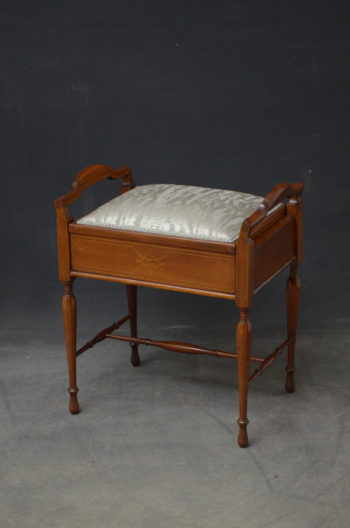
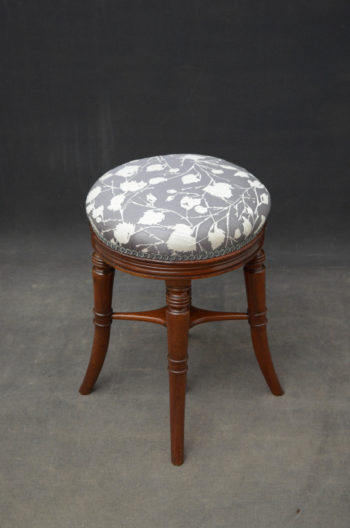
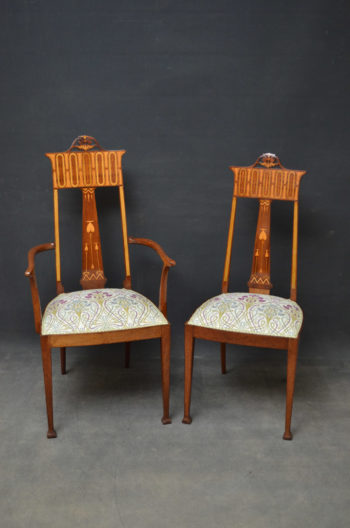
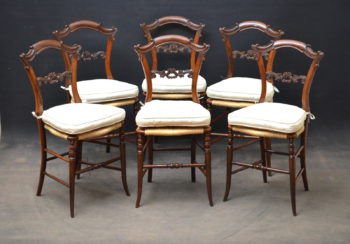
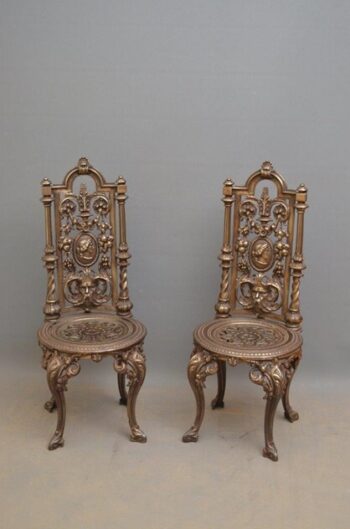
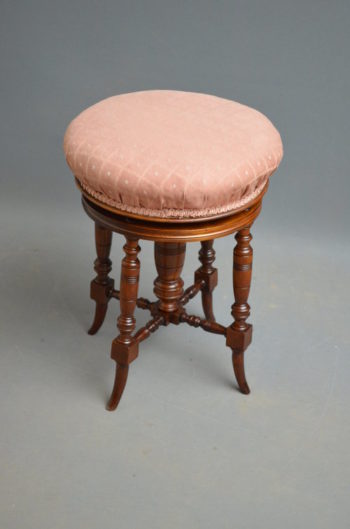
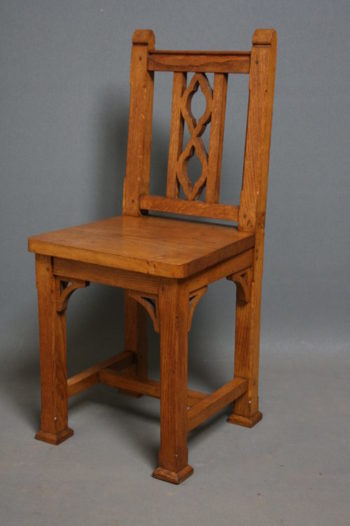
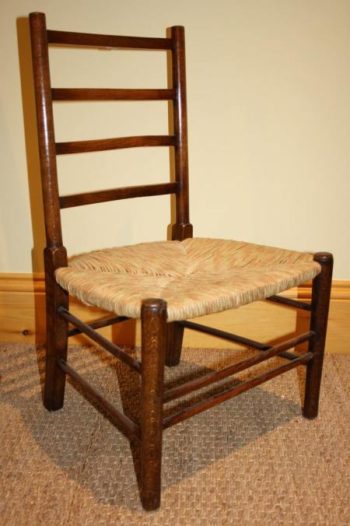
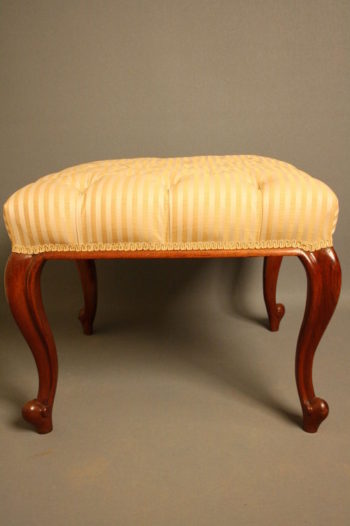
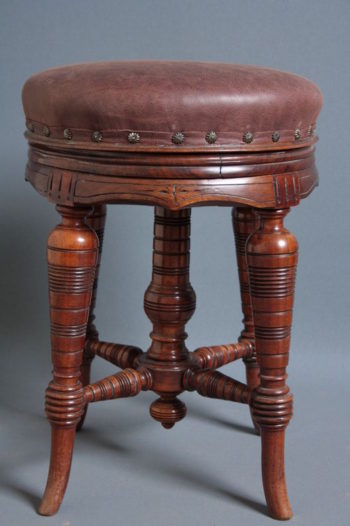
Every beautifully crafted piece of antique furniture often has a story to tell, and the style and finish of each item serve as a perfect reference point for a particular point in history.
If you travel right back in time to about 1490 BC, this was the estimated time in history when the Egyptians led the way in transitioning from creating items that were merely functional into furniture that can be viewed as sumptuous works of art.
A classic example of that would be a famous piece credited as being made for an important woman known as Hatnefer. This highly decorative straight-backed chair from ancient Egypt helped set a template and began a timeline for antique furniture that has seen craftsmen from around the world leave their mark on history as life evolved.
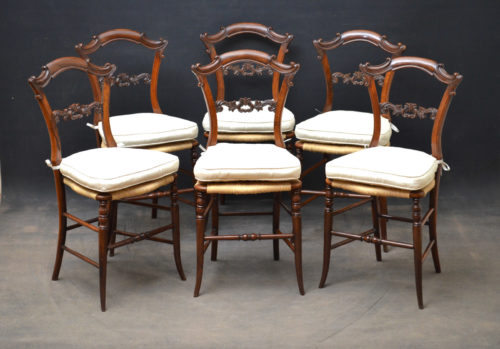
The history of furniture can be used as a fascinating lesson in how cultures and production techniques have evolved over the centuries. Here is a specific look at the history of antique chairs, highlighting important periods in time and how they have been commemorated through chair designs and exquisite craftsmanship.
From Gothic and Art Nouveau to Victorian and Regency, and many other classic examples besides, every antique chair reveals so much. In addition to a trip through important periods in history and the chair designs that define that period, we also offer some tips on how to go about casting your eye over a set of antique dining chairs, for example, and identify their history together with an idea as to whether they are a genuine representation of that era.
An unrivalled collection of antique furniture.
It is hardly surprising that very few examples of genuine chairs from the middle ages have survived in view of the time since we are talking about the 13th century.
However, there are two specific reasons for this. Firstly, wood is obviously a perishable material and vulnerable if not cared for, but primarily, the absence of many examples is due to the fact that comparatively small volumes of furniture were produced, which remained the case until the Renaissance period.
It wasn’t until the 14th and 15th centuries that substantial developments in chair designs and construction methods truly evolved and items became symbolic of a person’s status and wealth.
The only people in society to own good-quality furniture were noblemen and some wealthy merchants. Chairs were a rarity in the middle ages and even in an important residence, it might only be the Lord and Lady who had somewhere to sit.
A defining feature of a medieval chair would be an exaggerated back and elaborately carved canopies. Very little English furniture from that period exists and most examples tend to be of European origin.
Often referred to as the golden age of furniture, French furniture in the 17th and 18th centuries can often be viewed as the epitome of luxury and decadent design.
European royalty took the view that money was no object and a shining example of this pursuit of opulence would be King Louis XIV, who spent staggering sums of money on items of furniture such as chairs that were made from the finest materials around the world, such as exotic wood and imported lacquer.
French furniture makers developed an enviable reputation as the masters of their craft and it is hard to argue against the observation that the Renaissance period set a benchmark that still inspires a new generation of craftsmen.
It was during this period that a new technique was developed by French bronzers. They perfected a process of gilding metal that produced what is known as the ormolu technique, commonly referred to as gilt bronze.
Furniture featuring ormolu mounts became highly prized as a result of giving the appearance that they had been crafted out of solid gold.
In addition, the Louis XIV period is also where the so-called Boulle marquetry technique was developed, which is unmistakably intricate in its design.
The decadence of King Louis XIV proved to be the catalyst for the famously flamboyant style of furniture known as Rococo, which defined the reign of Louis XV. A Rococo chair is likely to feature unique asymmetric and ornate designs.

There were a number of significant developments in chair design and manufacture through the 19th century and this was a period where we witnessed the arts and crafts movement, followed by Art Nouveau and Art Deco before Modernism took centre stage.
Minimalism became a prominent design concept that dominated the second half of the 20th century. The examples of antique chairs that you see from the minimalist period are light years away from the ornate and intricate French furniture that dominated the minds of craftsmen throughout the 18th and 19th centuries.
Every antique chair has its own place in history. Whether you admire a piece for the wonderful craftsmanship that was needed to create such a unique beautiful item or your eye is drawn to the aesthetic charm of a modern classic chair, the joy of collecting items of furniture that encapsulate a moment in history is a pursuit that many enjoy.
The industrial revolution followed, and it left an indelible stamp on many aspects of society. It also had a profound impact on furniture manufacture and the consumption of these items. This was a period in time when man-made materials also become a part of the evolution of furniture and mass production meant that skilled craftsmen no longer had as much input as before.
However, what this did signal was the rise in the role of prominent designers who allowed their stylish designs to be more affordable and available to a mass market.
This brief history of antique chairs can help you to appreciate the different characteristics of each style and period.
As there have been so many styles of antique chairs throughout the history of furniture, it can be challenging to identify specific pieces, although some are obviously iconic enough to make it easier than others.
Here is an overview of some of the influential designers and styles, plus some tips on how to identify an antique chair by its style and markings.
An obvious starting point when inspecting an antique chair would be to look for a manufacturer’s mark. The majority of furniture makers used either paper or metal labels, but these may have faded away or were not present at all, depending on the age of the chair.
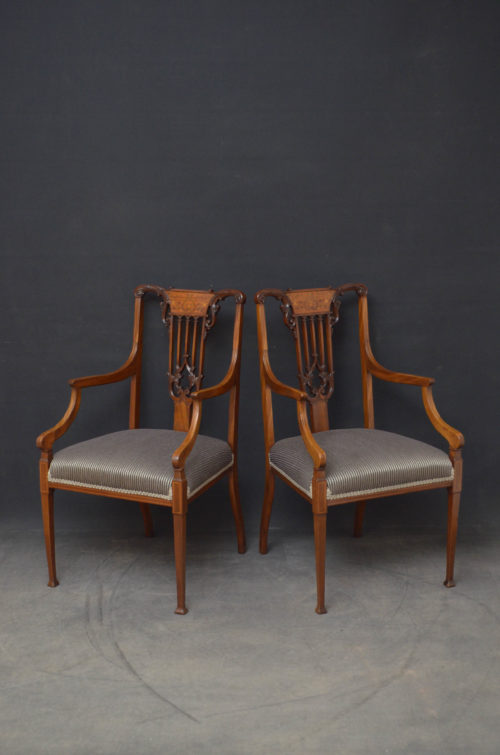
You will quickly discover that by looking at the way a chair has been constructed, this can provide vital clues regarding its age and provenance as a genuine piece. A hallmark of the industrial revolution and mass production was a bias toward symmetrical furniture. It became easier to use machinery to achieve precision cut pieces.
The relevance of this is that genuine handmade chairs would have more of an asymmetry about them. This can be a useful starting point when trying to evaluate the genuine age of an antique chair.
The materials used in the construction of a chair also provide vital clues, especially when you consider that before import and export lines were established, furniture makers had to use what was available locally. This makes it easier to validate an antique chair if you can identify the materials used.
The next step would be to take a good look at the visual characteristics of the chair, as this is a reliable method often used to identify its age. It is also the case that carving styles tend to be specific to a period and noting the stylistic influence can prove to be an accurate indication as well.
The world of antique chairs has been heavily influenced by three prominent designers.
Thomas Chippendale is recognized as a hugely influential figure and many craftsmen sought to replicate his work. Key characteristics of a Chippendale would be the use of deep mahogany, and notable Chinese, Rococo, or Gothic influences.
Next on the exalted list is Thomas Sheraton, who is credited as the inspiration behind numerous 18th-century designs. If the chair displays nicely tapered column legs and is in a neoclassical style, it may well be a Sheraton design.
A distinctive characteristic of the last of the so-called “Big Three”, George Hepplewhite, is how wide the back of the chairs are. The use of curved or circular shapes and straight legs also point to a Hepplewhite design.
Finally, in terms of design, you will quickly discover that there are some specific styles regularly associated with antique chairs.
The Slipper Chair and Porter’s Chair are two classic designs, as are the Tub Chair and the Yoke Back Chair. The design of a Klismos chair can be traced back to Ancient Greece and still influences modern design, and last but not least, the functional Corner Chair that surged to prominence in the early 18th century.
As you can see, the history of antique chairs is fascinating and you will soon become captivated by the beauty of these items, especially when you set eyes on the real thing.
If you’re looking for fine antique chairs, take a look at our range here at Nimbus Antiques.
| Cookie | Duration | Description |
|---|---|---|
| cookielawinfo-checbox-analytics | 11 months | This cookie is set by GDPR Cookie Consent plugin. The cookie is used to store the user consent for the cookies in the category "Analytics". |
| cookielawinfo-checbox-functional | 11 months | The cookie is set by GDPR cookie consent to record the user consent for the cookies in the category "Functional". |
| cookielawinfo-checbox-others | 11 months | This cookie is set by GDPR Cookie Consent plugin. The cookie is used to store the user consent for the cookies in the category "Other. |
| cookielawinfo-checkbox-necessary | 11 months | This cookie is set by GDPR Cookie Consent plugin. The cookies is used to store the user consent for the cookies in the category "Necessary". |
| cookielawinfo-checkbox-performance | 11 months | This cookie is set by GDPR Cookie Consent plugin. The cookie is used to store the user consent for the cookies in the category "Performance". |
| viewed_cookie_policy | 11 months | The cookie is set by the GDPR Cookie Consent plugin and is used to store whether or not user has consented to the use of cookies. It does not store any personal data. |